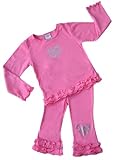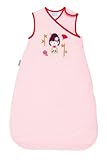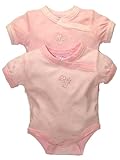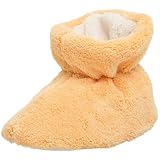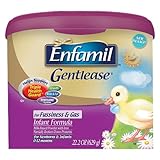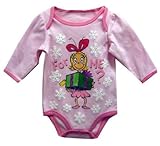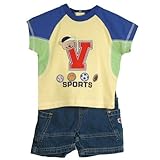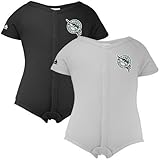When can I introduce Flax and Flax Seed to my baby? Is Flax Good for Babies? What exactly is Flax and Flax Seeds and how will Flax benefit my baby?
Flax and Flax Seed is something that most of us have heard of either in passing or mentioned in an article somewhere. We know Flax is "good for us" and contains Omega 3's. Many people however have no idea where to buy flax, how to serve it and most importantly, when it may be introduce to baby and toddler. Our topic for October 2006 will introduce you to Flax. We'll show you how and when you may introduce Flax and Flax Seed to your baby!
As always, we recommend that you consult your pediatrician whenever you introduce your baby to a new food; generalities may not apply to your baby!
What is Flax?
Flax has been cultivated for centuries, it's cultivation can be traced back to the Stone Age even. The American Colonists grew flax to use it's fiber for making (linen) cloth and cultivated Flax for commercial production as far back as the 1700's!
Flax is a flowering perennial. It's flowers are plentiful and are amazing to see! Flax blooms from May through September. Flax is mostly grown in Canada and in the Northern Mid-West areas of the United States. Flax has amazing health properties and is a good source of healthy oils, fiber, and other essential nutrients for baby's (and adult's) health, growth and development. The three essential components of Flax that are wonderful for our bodies are:
- Omega-3 oils - You may recognize them as "alpha-linolenic acid" or ALA
- Lignans
- Fiber, both soluble and insoluble When Can My Baby Begin To Eat Flax?
How Much Flax Should I Offer my Baby?
We would recommend offering your younger baby no more than 1 tablespoon of Flax per day. Note that 3 teaspoons are equivalent to 1 tablespoon so you may add up to 3 teaspoons in several "meals" during a day. While one cannot really "overdose" on Flax, it is important to keep the dosage relatively low as Flax is a natural laxative. It is possible that very loose stools and/or diarrhea will occur with eating too much Flax. Many parents who give their babies Flax increase the amount once baby has turned 1 or 2 years old.
As with any new food, it is important that you watch out for any possible reactions. While Flax is not considered a high allergen, you still want to watch for any digestive upsets!
How Can I Add Flax to my Baby's Meals?
Many people add whole Flax Seeds directly to their baked goods and cereals. It has been found that the seeds may not prove to be as healthful as using the Flax Oil, Ground Flax or Flax Meal. The whole seeds may not break down enough in the digestive system to completely release all the wholesome and healthy goodness of the Flax.
Flax Oil, Ground Flax or Flax Meal may be added to your Baby's food in a variety of ways! (ensure your choice of foods is age appropriate for your baby!!)
- Add Flax Oil, Flax Meal or ground Flax Seeds to your baby's infant cereals
- Sprinkle Flax Meal or ground Flax Seeds in your baby's yogurt, mixed in or over baby's fruit purées, add it to veggie purees and meat/rice/veggie meals too!
- Flax Meal or Ground Flax is great in J&J's Baby Meatballs, meatloaf, fish cakes and homemade chicken nuggets too!
- Baked goods with added Flax Meal give your teething biscuits and rusks an extra nutritional boost too! Try Flax Meal or Ground Flax in Baby Cereal Pancakes too!
- Flax oil may be added to porridge, yogurt and anything else you may wish to add it to!
Can I Use Flax Oil as a Substitute for Other Oils in Cooking?
You cannot cook with Flax Oil as you do with Olive Oil! Flax oil will burn and go rancid when heated.
How do I store Flax?
Flax must be stored properly as it is very delicate. Whether you are using Flax Oil or Ground Flax, store your Flax in the refrigerator! Flax can go rancid very quickly and then it will be unhealthy to eat! Whole Flax Seeds are not as delicate and may be kept for up to 2 years in a dry cool sealed container.
How Will Flax Benefit My Baby's Health and My Family's Health?
One tablespoon of ground Flax Seed has about 40 calories, 2.3 grams of fiber and 2.8 grams of fat, 1.5 grams of which are omega-3s. Flax Seeds also contain Iron, some Calcium, Vitamins B-1, B-2, Vitamin C and E and some Vitamin E and carotene too! WOW! That's a lot of healthy nutrients packed into seeds!
Flax Oil is not as nutritious en masse as Ground Flax Seeds or Flax Meal. Your baby will still obtain all the Essential Omega 3 when using the Flax Oil however the protein and other nutrients decline when Flax Seeds are pressed into Flax Oil. It is worth grinding your own Flax Seeds or purchasing Ground Flax Seeds so that you can obtain all the healthy goodness of Flax!
Due to it's high soluble fiber content, Flax Seed or Flax Oil is a great natural laxative! Use Flax Seed Oil to help your baby with Constipation and to help keep the whole family "on schedule"!
Flax Resources & Learning More
- Flax Council of Canada - [http://www.flaxcouncil.ca/english/index.php?p=home]
- Seattle Times - What is Flax? - http://seattletimes.nwsource.com/html/living/2003192279_flax13.html
- Whole Foods - Flax Seed Information - http://www.whfoods.com/genpage.php?tname=foodspice&dbid=81
Margaret Meade is the Editor of http://www.wholesomebabyfood.com and is the mother of 3 boys. The boys were raised on all Homemade Baby Food; and since Mommy had been studying nutrition for many years, she knew homemade was best! Visit wholesomebabyfood.com and find out how easy it is to make your own baby food. Once you begin, good healthy eating habits will automatically flow!
